Kids love bubbles as well as dry ice. We combine them together to demonstrate a STEM activity. It is so fun to play this. You should really try it with your kids. Have fun.
Age: 5+ Time: < 20mins
Safety
1. your skin is not to touch the dry ice.
2. Adult supervision.
Materials List
- Bowl
- Water
- Dry ice
- Bubble solution (washing soap solution)
- Cotton rope
Instruction
Step 1/3 – Pour about 200ml water into the bowl and add two or three pieces of dry ice in the bowl.
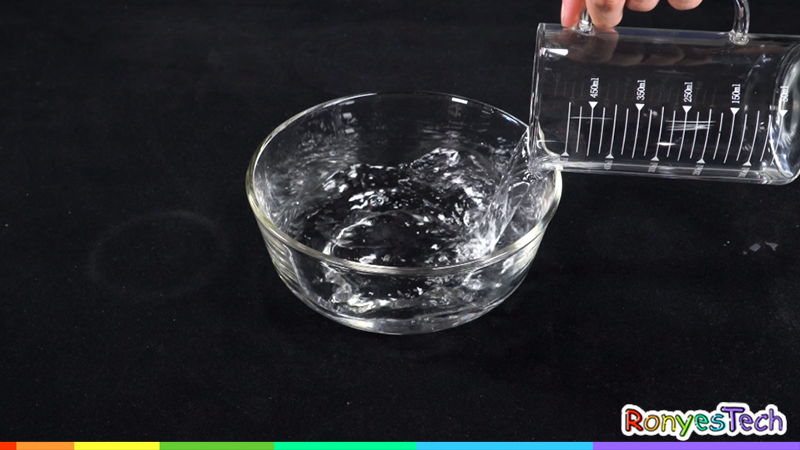
Step 2/3 – Soak the rope in the bubble solution for 3~5 seconds and wet the rim of the bowl with the bubble solution.
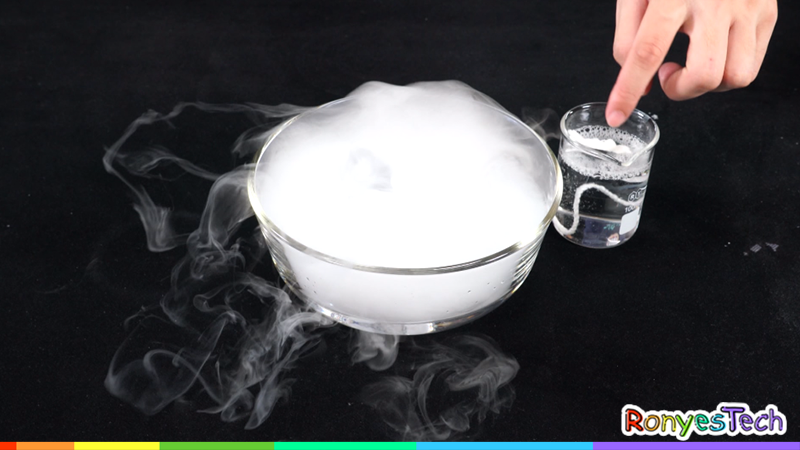
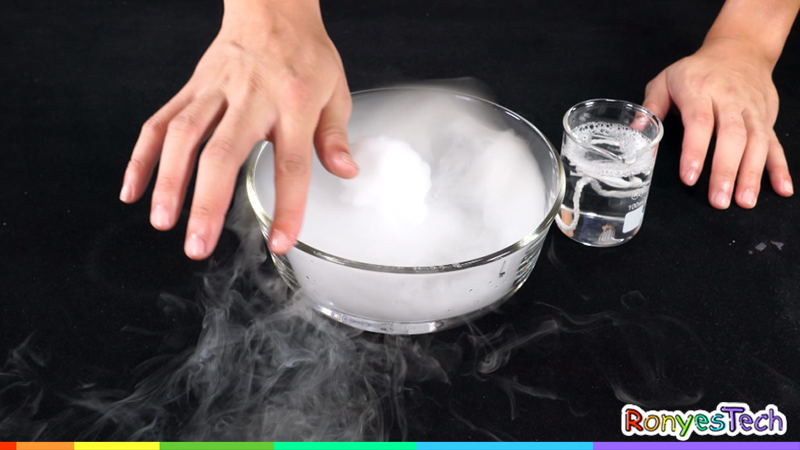
Step 3/3 – Stretch the rope between your hands and slowly pull the bubble solution across the rim of the bowl. It is to create a soap film across the entire bowl. before you are master at it, you need to take some practice.
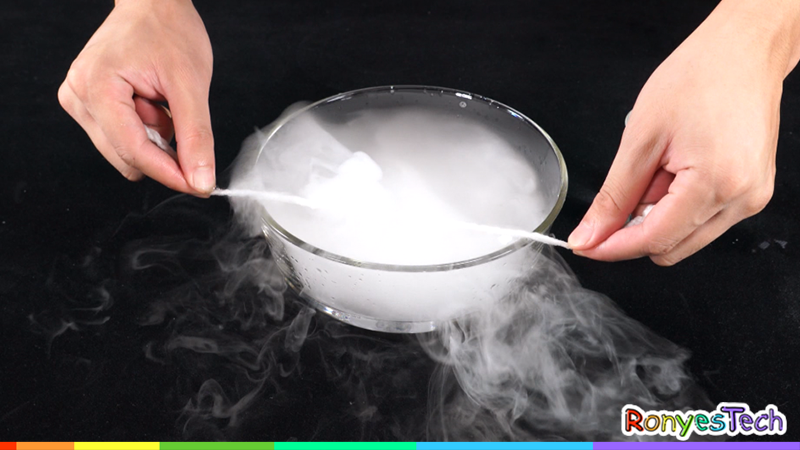
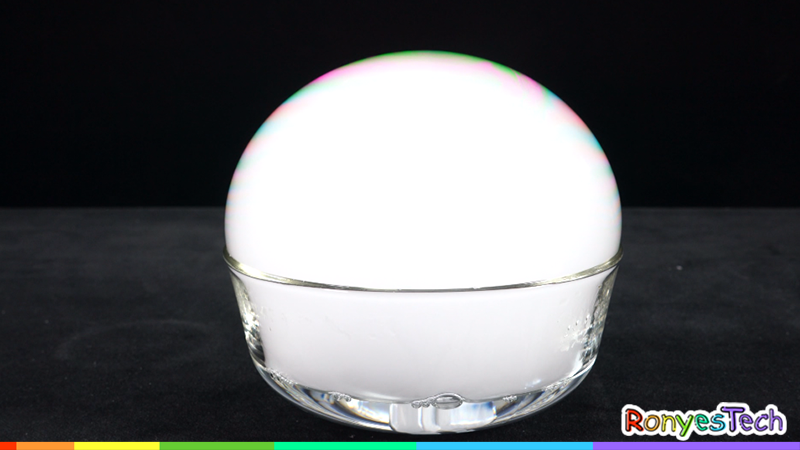
Troubleshooting
Why the film always pop when I try to pull out a whole film?
—You can add glycerin or white sugar to the bubble solution in order to upgrade the bubble solution. And, be patient. It needs some practice.
Scientific Description
Dry ice is the solid form of carbon dioxide which is the gas under room temperature. The dry ice will sublimate (the physic process that solid turns into gas directly) into carbon dioxide under the room temperature. The sublimating process makes the surrounding environment super cold and causes water vapor in the air to condense. That is where the fog comes from. The thin layer of soap film stretches across the rim of the bowl enclose the expanding cloud to create a giant crystal bubble.
Extensions
What if you put the dry ice in the bubble solution? What will happen?
Interested in dry ice? Check our Cool Dry Ice Experiments for Kids to explore more about dry ice. Let's get started with this cool dry ice explore journey now!
Dry Ice Crystal Ball | STEM Activity
 Reviewed by Ronyes Tech
on
May 14, 2020
Rating:
Reviewed by Ronyes Tech
on
May 14, 2020
Rating:
 Reviewed by Ronyes Tech
on
May 14, 2020
Rating:
Reviewed by Ronyes Tech
on
May 14, 2020
Rating:


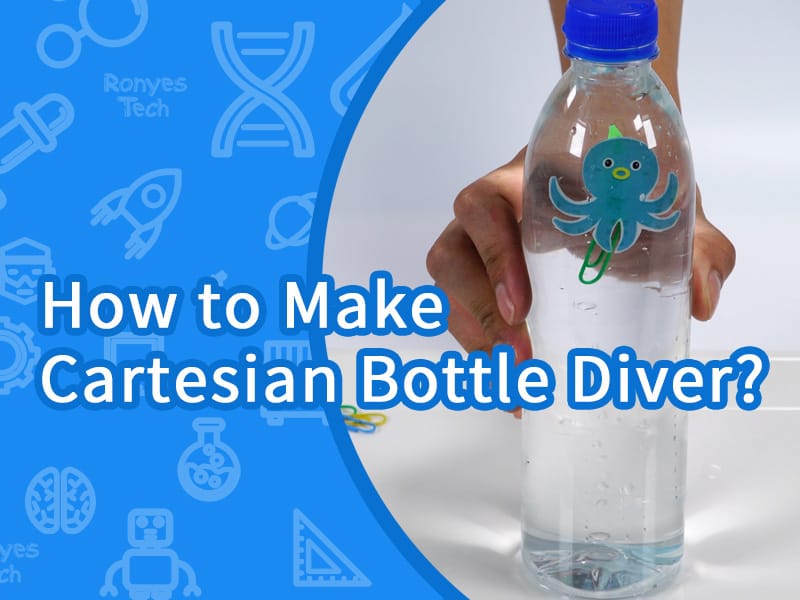




La forma sólida del gas carbon dioxide a temperatura ambiente es el hielo seco. Under room temperature, dry ice will sublimate (the physic process that solid turns into gas directly) into carbon dioxide. El proceso de sublimación hace que el entorno alrededor sea extremadamente frío y hace que el vapor de agua se condense en el aire. Muchas cosas nuevas aprendí de este post. Es maravilloso ver contenido tan útil disponible. Esta publicación proporcionó información y recomendaciones útiles. Estoy agradecido de que este post haya aclarado el tema. This post was well-written and easy to understand. Looking forward to reading more posts like this in the future.
ReplyDeleteCriminal Defense Lawyer in Fairfax VA
Using the intriguing properties of dry ice, the Dry Ice Crystal Ball STEM project is an entertaining and instructive approach to learn about science. My dissertation on finance is just getting started, and I am not sure how to handle the proposal section. Even after reading through a few samples, I still do not understand the structure. Does anyone know how to draft a strong finance dissertation proposal? Should I adhere to a particular format or style? Any tips or resources that have aided you in drafting your dissertation proposals would be greatly appreciated. Any feedback from someone who has gone through this procedure would be greatly appreciated!
ReplyDelete